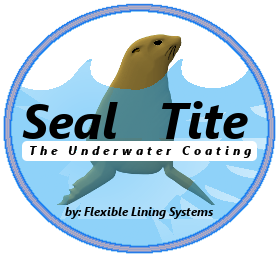Concrete Ponds – Curing, Sealing and Treatment
Concrete as a Building Material for Ponds
It is important that concrete material used in construction of water systems of any sort is able to cure properly for the type of application or be prepared for a waterproof coating. Aside from increasing strength the cure process also allows for the removal of Lyme when done a certain way.
If the pond is filled with water, leeching will occur naturally and the Lyme will be removed each time you empty the water until there are insignificant amount (refer to ?the long way? below). The other way to remove Lyme is to acid etch the surface after 7 days of moisture curing.
Leeching side effects
Water gardens with concrete that has not cured properly can have extremely alkaline water which will negatively affect certain water animals and fauna. Therefore, make sure any cement/gunite structure cures properly PRIOR to application of any liner or coating, especially if you plan on having fish/turtles/koi etc.
The leeching process can have an effect on the ability of a coating to adhere to a surface. Meaning, a coating could delaminate from the surface concrete because of the chemicals leeching from the concrete causing separation of the coating from the substrate.
How to cure concrete for a pond
If the pond is to be used for koi specifically you will want to go the long way and NEVER take a short cut?
For the long way, you need:
- Plastic sheeting enough to cover your pond surface with overlap
- 2 x 4 boards
- pH test kit
Place the 2 x 4?s over the pond evenly about 18? apart. Cover the pond entirely with plastic sheeting and place weight on edges. Fill pond to top and let sit for 1 week. Drain and fill again. Let it sit for 2 weeks. Drain and fill again. Let it sit for 3 weeks. Drain and fill again. Let water sit for one week. Drain, fill and test pH. pH should be tested multiple times and remain between 5.8 and 6.8 pH for the next two weeks.
Do you have to cure concrete when using a sealer?
Yes, you do not want to rush the curing process. The strength of the concrete is compromised. Moist curing is recommended when using a penetrating sealer. Moist curing allows the concrete to cure at ultimately a lower temperature which is important because the slower the cure, the stronger the concrete.

Professional Product for Home Use – Fish and Plant Safe
Best Materials to Use for Different Ponds
Water Gardens
Water gardens will ultimately have life in them. Whether you put it there or not, any healthy water source will support life of some sort. Whether it?s some water plants that are brought in by way of migration, or frogs finding your habitat ideal for laying eggs, you will have life.
These ponds can be < 4? deep and optimally between 1? and 3? deep. Therefore, EPDM liners are a better solution for non-koi ponds.
However, EPDM liners are not permanent structures. If you have a great stake in your property and know what you want, you may want to think about using a permanent solution like concrete. In addition, a concrete pond can increase the value of your home. Just make sure that permitting practices are followed.
Koi ponds
Since the depth requirement is greater creating a need for a much larger liner and possibly breaking the constraints that liners work well within, concrete/gunite + polyurea solution is the optimal solution for koi ponds. In earthquake prone areas, EPDM or geotextile + polyurea solution is suggested.
However, there is still a need for a structural component with geotextile + polyurea in certain conditions or building designs. Geotextile + polyurea itself does not maintain rigidity when unexpected pressure is applied to the surface. This is why any pond that is deep or has vertical surfaces to be coated is suggested to be constructed from concrete + polyurea .
Concrete + polyurea creates an extremely durable and tough system that can undergo extreme conditions without endangering the integrity of the surface.

I have a 12’water path to our pond I have reworked this 12-14″ path because of leaking with concrete. I only did patching on the run. I let it dry over night. The concrete had set up, turned the pump back on, 12-14 hours later. Could this new concrete harm the Koi?